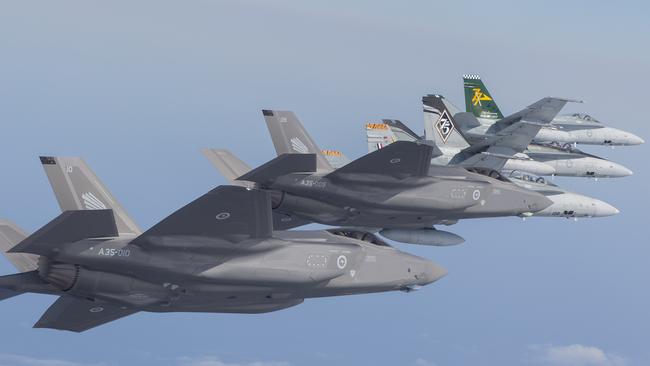
Defence Minister Richard Marles blames coalition governments for past mistakes and does not isolate the JSF and Frigate errors.
Politically but that makes sense, but in reality the ALP would almost certainly have made the same mistakes unless they woke up to the underlying public service weaknesses.
The combination of Marles and Foreign Affairs Minister Penny Wong has been brilliant and has raised the standing of Australia in the region way beyond anything achieved by recent former Coalition and ALP governments.
I have no doubt China now respects Australia, whereas previously it thought we were fools, which contributed to the trade bans.
But our new standing in the region has not coincided with any noticeable change in the approach to ordering defence equipment.
Indeed, some of the remarks by Marles and others indicate that they actually believe the past mistakes were simply the fault of Coalition ministers rather than the inadequate talents and flawed systems, albeit augmented by poor ministers.
Accordingly, there is a danger that Marles will repeat the past mistakes, but this time they will be more serious because there is a much greater risk from China than there was in the Coalition years.
The JSF, submarine and Frigate purchases involved three different governments (the US, France and the UK) and three different suppliers.
In each case, Australia was buying equipment at the design stage and the three suppliers sold the likely final product to our defence chiefs using claims that turned out to be false and misleading.

At the same time, the three governments involved put pressure on our politicians.
The defence chiefs simply didn’t have the ability to determine that the sales pitch was hogwash and to make sure there was a clear exit path if the design disappointed.
In the case of the Frigate, the design could not take both the American combat system and our radar so instead of exiting, it was redesigned at our cost to create what will be the most expensive Frigate ever built in the world.
In the case of the submarine, the error was evident on the day the contract was announced. Then Prime Minister Malcolm Turnbull announced one contract and the French, at the same time, announced a very different arrangement.
The French never intended to build what we had been offered, so the costs ballooned dramatically.
Thankfully, the last coalition defence Minister Peter Dutton had the courage to cancel the contract.
In the JSF/F-35, Lockheed Martin, backed by the US government, told us they would design an aircraft that would maintain air superiority in the region and would have a combat radius of at least 690 nautical miles.
The worst-case scenario would be 590 nautical miles, but some American officials claimed that the combat ratios would be in excess of 700 nautical miles (One nautical mile is 1.85 kilometres).
At the time, Australian Flight Test Services was among the nation’s top defence aircraft testing organisations.

A team of its experts poured over the JSF proposal and told government defence officials it was one of the worst designs ever considered to be put into production.
Instead of a combat radius of 690 nautical miles, the JSF would be much less than 490 nautical miles and its combat altitude would be limited to 30,000 feet whereas its opponents would be combat-ready above 50,000 feet.
To extend its flying radius, it would require an air refuel tanker, which greatly increased the risk.
Similar warnings were made in the years that followed, and each one was ignored.
There is no doubt the JSF/F35 does have significant attributes and abilities, but those abilities are limited by its flying range.
Material produced by Lockheed Martin shows the combat radius is probably around the 410 nautical mile mark, and the aircraft has great difficulty flying at around 50,000 feet for an extended period.
Because the base design of the aircraft is faulty, there are hundreds of problems still unsolved and as one is fixed, others are created
Fast-forward to 2023, once again among the proposals is a submarine – this time nuclear – and a so-called stealth bomber, which are both in the design stage and like the previous decisions, it is unlikely we have the capacity to evaluate those designs.
In addition, we do not have detailed knowledge of what the Chinese are planning.
The government has appointed Angus Houston and Stephen Smith to inquire into the past mistakes, but Mr Houston was a defence official involved in making the JSF mistake and Mr Smith – as a former defence Minister – didn’t take the opportunity to cancel the mistakes. Given the JSF is still not officially recognised in Australia as a mistake, they have the difficult task of reviewing their own decisions.
The Chinese are developing a detection system to locate nuclear submarines in deep water and next year, they will launch a stealth bomber that shows every sign of being superior to the one the US are designing.
Does Australia need an attacking bomber?
We therefore need expertise we don’t currently have in the defence department to evaluate the weapons being proposed and determine Australia’s needs, which includes both timing and industrial capacity.






Australia’s massive defence equipment blunders, led by the Joint Strike Fighter/F35, the French submarine and the British frigate, were all caused by the same flaw in our defence equipment purchasing systems and talents.